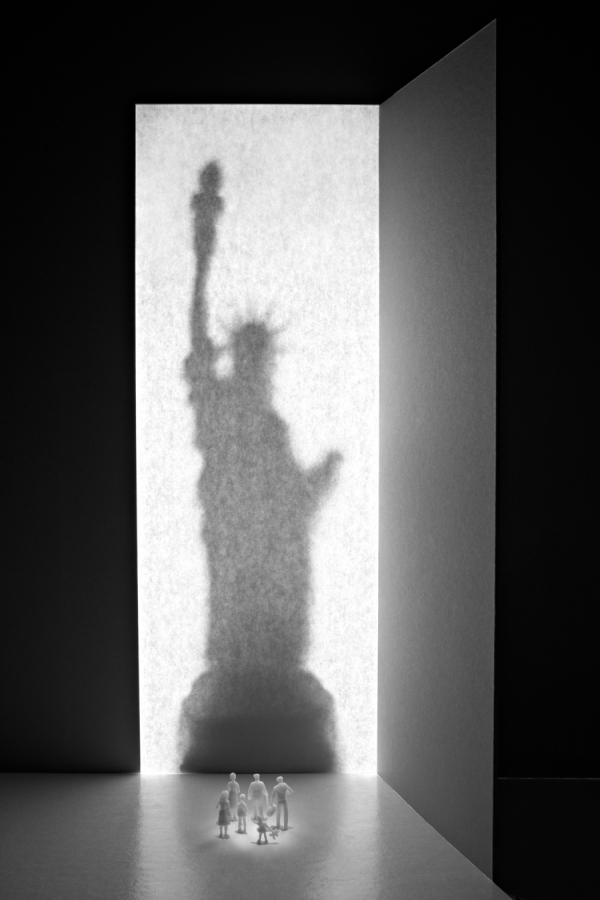Conceptual: Honorable Mention 2017 (professional)
ENTRY DESCRIPTION
The piece was assembled entirely by hand (not Photoshop) in studio, and lit with three continuous light sources. It was created in early 2017, shortly after an immigration ban was enacted by the government of the United States. The artist was a child of an immigrant, and the piece was created as an homage to all those beings seeking refuge in foreign lands. The title is derived from the poem "The new Colossus", by Emma Lazarus. The scene shows the Statue of Liberty beyond an open door, though the entryway is obscured by a temporary screen of hazy smoke. A group of hopeful immigrants stands before it all in a shrunken pool of light. Nothing lasts forever, and eventually the light will grow and the smoke shall clear.
AUTHOR
For the last twenty years, Marius has been exhibiting full-time at art shows from Florida to California. His work has gone through different periods, from Polaroid transfers to visual meditations created in the Far East. Currently, he is creating monochrome still life studies in his studio.
In 1994, he received a bachelor of the Arts degree from the University of South Florida, with an emphasis in photography. He worked for the St. Petersburg Times newspaper for four years in the Camera Department and four years in the news photo Department before moving on into the fine art world.
Marius’ work has always been inspired by Zen. He was conceived in Korea and grew up surrounded by Asian art. It obviously had an impact. His latest work is inspired by Zen Koans, which are allusions meant to short circuit the mind to see beyond the mundane.
With his new studio creations, inner subjects are more freely explored. Rather than working with what the world presents, entire new worlds can be imagined. There is light to finesse, angles to ponder and thoughts to deconstruct. Sometimes a concept is preconceived. Other times it seems to manifest itself.
The still life subjects are assembled in studio. A single exposure is made with a modern camera and vintage lenses. The image is then printed on old-school baryta coated paper with a new-school machine. Yin, then Yang.
back to gallery
